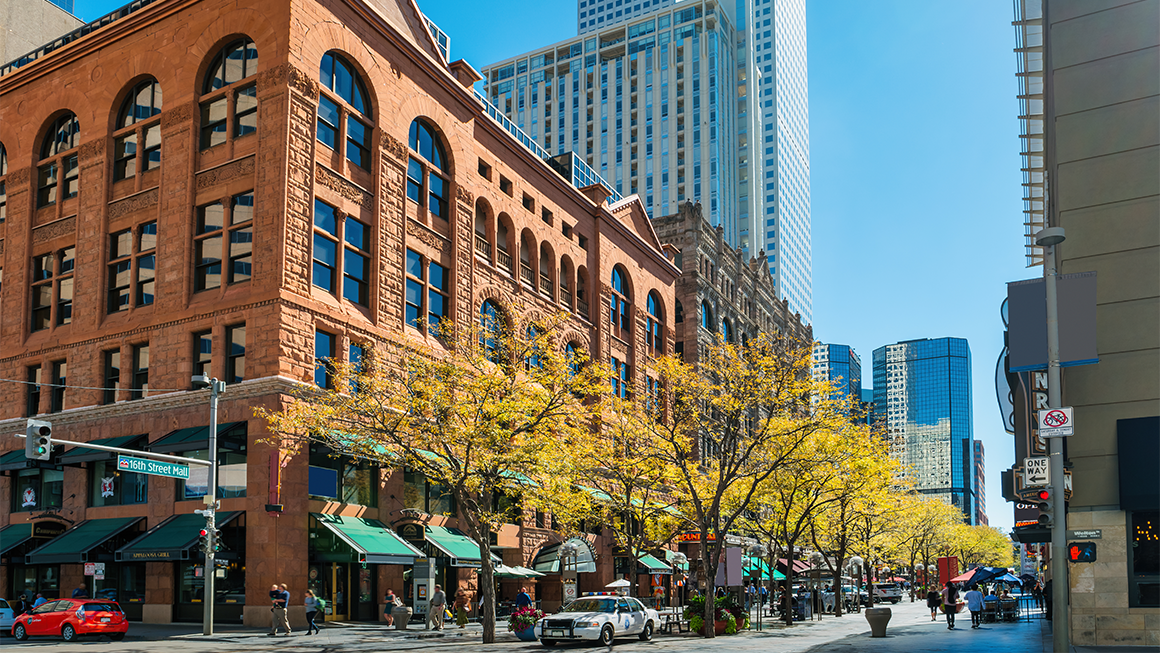
The Denver Mayor’s Office recently announced a 45 percent reduction in unsheltered homelessness (PDF) from January 2023 to January 2025. Before then, unsheltered homelessness was worsening.
In July 2023, following multiyear increases in unsheltered homelessness, Mayor Mike Johnston announced the House1000 initiative to move 1,000 people indoors, followed by the All In Mile High (AIMHigh) initiative in January 2024. AIMHigh is a citywide strategy to effectively end unsheltered homelessness by the end of 2026. The Urban Institute is evaluating AIMHigh’s implementation and effectiveness.
Denver reported a reduction in their point-in-time count, and our evaluation analyses show a substantial reduction in the number of large encampments in the city: 98 percent fewer groups of 20 or more people and 89 percent less groups of 10–20 people.
Here are five early takeaways from the Denver evaluation that other communities should consider to reduce the number of their own residents enduring unsheltered homelessness:
- Used real-time data to locate and prioritize encampments by size, composition, and public health risks. Using reports to 311 as well as on-the-ground information from police and outreach staff, the mayor’s office and partner agencies identified and prioritized intervention for encampments with large numbers of people. They also focused on encampments with significant numbers of structures and reported health risks, including sanitation and mental or behavioral health concerns.
- Coordinated outreach groups across municipal agencies and nonprofit service providers. Denver has different types of outreach teams, including homelessness response, public health, police, and public safety. Denver’s Department of Housing Stability (HOST) and the mayor’s office coordinated these teams to move people in prioritized encampments into housing and shelter. More recently, these outreach teams began to coordinate on daily morning calls to monitor real-time data on emerging encampments and areas already cleared and being maintained.
- Developed and scaled noncongregate shelter options. Denver converted hotels and constructed “micro-communities” that provided low-barrier interim housing across the city where residents could bring their pets and possessions into shelter with them and receive services. Residents described the noncongregate shelters offered through AIMHigh as safer, cleaner, and more supportive than shelter options they had used previously. A resident of a micro-community described it as “nice, brand new, big enough.… Room for everything you needed to have with you. I am very happy to be the recipient of such a wonderful thing. I love it.” Several residents of the noncongregate shelters shared they were grateful for a safe place to stay and the support they were receiving from their case managers.
- Prioritized connecting people in shelter to permanent housing through vouchers and rapid re-housing. Once people were in shelter, program staff connected people with permanent housing through rapid re-housing and vouchers. Most recently, Denver created a Housing Central Command (HCC), a consolidated effort to coordinate and expedite that process. AIMHigh staff are hopeful that the HCC model will help reduce barriers people with histories of homelessness face in the private rental market and maximize available housing resources across programs.
- Maintained cleared encampment locations. Through real-time data monitoring and coordination across homelessness, health, public safety, and police agencies, Denver has prevented encampments from returning by continuing outreach to those locations when reports of people returning arise.
As communities across the country struggle with helping people experiencing unsheltered homelessness, and as responses to unsheltered homelessness are receiving additional public scrutiny, many cities have chosen to address this through sweeping encampments or criminalizing (arresting or fining) people for experiencing homelessness.
But evidence shows criminalization and encampment sweeps don’t solve unsheltered homelessness. Early analysis from our evaluation of Denver’s initiative shows the AIMHigh strategies appear to be more effective—and are more humane—than criminalization or Denver’s previous efforts.
As the City of Denver enters another year of implementing AIMHigh, staff across agencies noted they’re proud of what they’ve achieved, and they recognize there’s more to be done: “This work is really hard… and we have made a ton of progress. We have something to be proud of.” The evaluation will continue through 2027, answering important questions around sustainability of these reductions and housing and well-being outcomes for people served by AIMHigh.
Let’s build a future where everyone, everywhere has the opportunity and power to thrive
Urban is more determined than ever to partner with changemakers to unlock opportunities that give people across the country a fair shot at reaching their fullest potential. Invest in Urban to power this type of work.